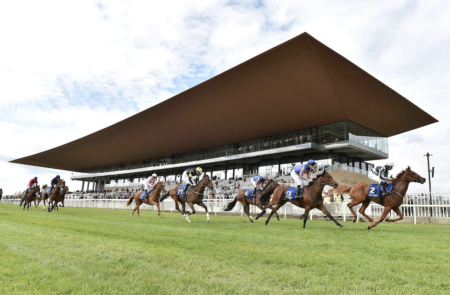In a recent article, The Guardian ranked the MLS’s 22 stadia from best to worst, crowning Orlando City Stadium as the best venue in the league. Now I’m all for more attention given to the MLS – in recent years, the standard of soccer has grown exponentially, and while it may be some time before it steals audiences from the European leagues, the MLS becomes more entertaining to watch every year. But I do take issue with some of The Guardian’s scoring criteria, as well as some rather rampant speculation.
For example, the article was written before Orlando City Stadium officially opened, which (one would presume) makes it tricky to gauge the level of ‘enjoyment from a fan perspective’ the stadium provides. Similarly, the Mercedes-Benz Stadium in Atlanta, which the club won’t move to until part-way through the season, checks in at #5 on the list. Let’s assume an amount of speculation on the part of the judges, but what about DC United? The RFK Stadium doesn’t fare too well on the list, landing at equal #18th place, yet the club will move to the 20,000-capacity Audi Field in 2018. Shouldn’t we also be speculating about what that new soccer-specific venue might be like for fans?
I’m yet to visit Orlando City Stadium, but I have spent a lot of time in recent weeks speaking to the people involved in the project (look out for an interview with the architects in the next issue of Stadia), so I can attest to the amount of attention given to creating a fantastic fan atmosphere and experience in the new facility, but crowning it the finest stadium in the league before the first game seems a little presumptuous.
In the ranking’s scoring system, bonus points were awarded for being a soccer-specific stadium (I’m on board with this, though it penalizes clubs that have worked hard to foster exciting crowd atmospheres in pre-existing stadia, which can be a thankless task in venues with far more seats than an MLS soccer-specific stadium would ever likely need), while points were deducted for artificial pitches. Most players and coaches prefer their teams to play on natural surfaces, that’s no secret, but I fail to see the link between a hybrid or artificial turf field and diminished fan experience. I’ve spent a lot of cold Saturday afternoons watching lower league soccer teams in the UK, and my enjoyment of the stadium had little to do with whether the game was held on a churned up, muddy quagmire or an artificial surface. For MLS teams based in cities blessed with extreme ranges of weather, maintaining a natural turf surface can be difficult when the climate shifts from freezing cold to baking sun (there’s also an interesting article on just this subject in the next issue of the magazine).
US soccer is committed to creating impressive stadia – and not just in the MLS, but in the lower tiers of the sport as well. But ranking the fruits of these multi-million-dollar labors on such arbitrary criteria seems a little harsh. I believe that Orlando City Stadium will be a fantastic venue – and early reports from fans appear to concur – and I’m also excited to see how projects for other teams, present and future expansion sides alike, will pan out. But I have concerns about the fan atmosphere for soccer inside a huge facility such as the Mercedes-Benz Stadium. I could very well be wrong, but that’s kind of the point. Until these venues are built, open, and hosting fans week after week, it’s difficult to gauge how the fan experience will shape up.
March 21, 2017





